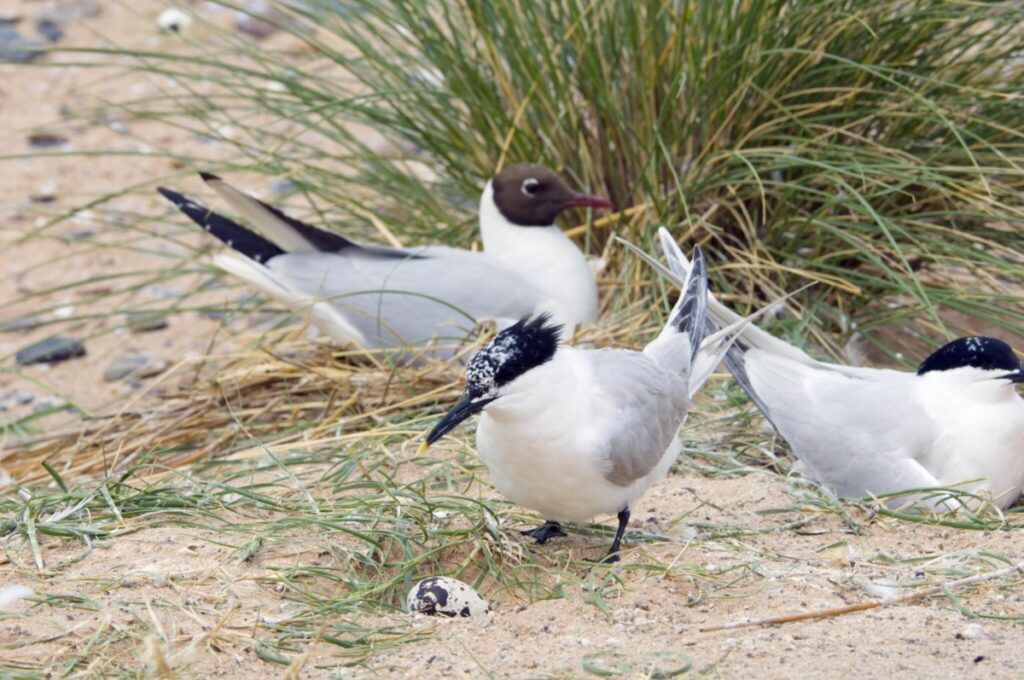SCOTLAND’S Avian Flu Task Force is on high alert following an increase in reports of dead seabirds around our coasts.
In recent weeks the situation has been monitored by NatureScot and partners, including the British Trust for Ornithology (BTO), RSPB Scotland and the National Trust for Scotland.
They have found worrying signs that more seabirds may be succumbing to the virus.
In particular there has been a rise in reports of dead kittiwakes; black-headed gulls; herring gulls; terns and guillemots being washed up on the east coast of Scotland, stretching from Wick in Caithness to St Abbs in Berwickshire.

So far in Scotland this spring/summer, testing has confirmed highly pathogenic avian influenza (HPAI) in Sandwich terns, common terns, kittiwakes, herring gulls, black-headed gulls and guillemots.
The virus has been confirmed at NatureScot’s Forvie National Nature Reserve (NNR) in black-headed gulls and Sandwich terns, with more than 200 Sandwich terns having died at the reserve.
Signs of avian flu have also been spotted in common and Arctic terns at Forvie with further test results awaited.
Kittiwakes have also tested positive for the virus on the Isle of May NNR, confirming that avian flu is likely responsible for the growing number of deaths being reported there.
However, the overall picture is not yet clear as elsewhere testing has had mixed results, with some tests of kittiwakes and black-headed gulls in different parts of the country coming back negative for avian flu.
There are a number of other factors that can impact on seabird survival, such as prey availability; predation by invasive non-native species and rough weather.
Climate change may also be a contributing factor, so further testing is required to fully understand what is happening along our shores.
Members of the public should avoid touching sick or dead wild birds and visitors to coastal areas are advised to keep their dogs on a lead to avoid them picking up dead birds.
The public is also advised to report finding a dead bird of prey, swan, goose, duck or gull or five or more dead wild birds of any other species at the same time, on gov.uk’s ‘Report dead wild birds’ page.
Alastair MacGugan, a NatureScot Wildlife Manager, said: “Unfortunately after a quieter period we are beginning to see an increase in the number of dead birds being reported through our surveillance network, particularly on the east coast.
“While we are thankfully not seeing the large numbers of dead birds around breeding sites that we did last year, this development is really concerning and we’re working hard with all partners in Scotland’s Avian Flu Task Force to understand what is happening and take action to make our wild bird populations more resilient.
“Testing is key to unravelling just what is happening to our seabirds.
“We are working with Scottish Government and the Animal and Plant Health Agency to coordinate testing and when possible, to carry out post mortems on dead birds.
“This gives us a clearer picture on whether starvation or avian flu is the main cause of the current deaths we are seeing.
“Our Isle of May and Forvie NNRs remain open to the public but we’re monitoring the situation very closely and will review what action might be required if we begin to see a significant increase in mortality.”
Dr Liz Huphreys, BTO Scotland principal seabird ecologist, said: “It’s clear that our seabirds are still being badly affected by HPAI, despite the fact the scale of mortality initially seemed less catastrophic than last year.
“We need members of the public to submit all sightings of dead birds to BirdTrack and the dead wild birds service.
“These sightings provide an early warning of where the virus may have hit and allows us to track its movement across the UK.
“It is also vital that we continue to monitor breeding birds via the Seabird Monitoring Programme, which will allow us to assess the losses that have occurred at colonies since 2021.”
Paul Walton, RSPB Head of Species Scotland, said: “Scotland’s breeding seabirds declined by 49% between 1986 and 2019 – before the devastating impacts of bird flu began in earnest last year.
“The outbreak in our wild birds comes on top of huge human pressures and is clearly ongoing.
“The pattern of impacts is unpredictable and varies across time, space and species.
“The RSPB is leading a programme of seabird surveys and research to understand the impacts and generate updated population figures for affected species, as well as contributing to NatureScot’s mortality reporting system.
“There are many conservation actions that our society could take to address the pressures on our globally important seabird populations and to build their resilience to new emerging threats.
“Now is the time for these to be prioritised and resourced. This deadly form of the virus originated in poultry in East Asia, and then spread to wild birds.
“It is a new human pressure on our wildlife – we should do all we can to help these incredible creatures thrive into the future.”